By Jim Moerschel
The vast majority of cameras available to photographers
create images shaped as rectangles.
A rare few yield a square image. When we view photographs in an
art gallery, magazine or portfolio, we see mostly rectangles that are
displayed horizontally
or in vertical format.
Since we have the choice of shooting either vertically or horizontally
what is
it that dictates whether we should use one or the other? Does it matter?
The
obvious answer is yes it does matter. Good composition of the final image
is
partially dependent on our choice of turning the camera one way or the
other.
In landscape photography we must first determine the combination of
foreground, mid ground and distant elements that will become our final
image.
If we select combinations of interesting elements that stretch across
our field of
view it is a clear choice to shoot the scene in a horizontal manner. Selection
of
focal length is determined by whatever will allow these elements to fit
in the frame.
On the other hand, when the interesting elements seem to rise in a vertical
manner, we will compose the scene by turning the camera to fill the frame
with
these components. After awhile this decision making will become instinctive
recognition. This attribute will become very important when trying to
compose
and shoot fast moving subjects in wildlife or sports photography.
There are some scenes that will lend themselves to being photographed
both
horizontally and vertically. This is due to the physical nature of the
elements of the scene and
how they are positioned. And, with some adjustments of placement of our
tripod we can create a different scene from the first one.
Here is a good example. This harbor scene was shot in New Harbor, Maine
at sunset. My first inclination was to compose the scene horizontally
with the tree
and reflection to the left and the sun and reflection off to the right
giving the scene
“balance.” I shot several frames, bracketing exposures to
increase my chances of
a dramatic image.
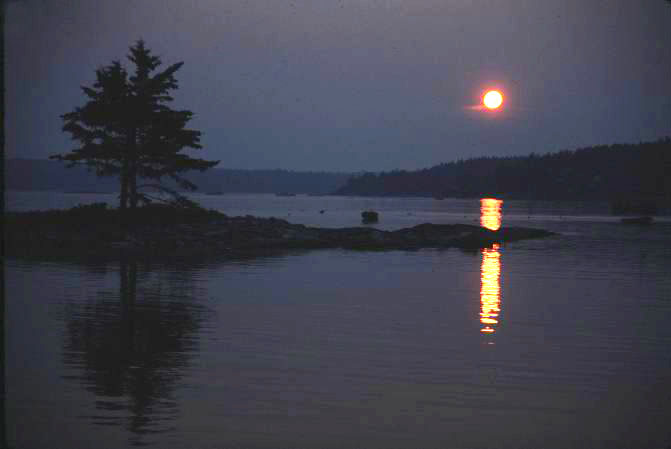
With my primary shot finished, I concentrated on finding another one before
moving on to another location. In a few seconds the next photograph was
taking shape in my mind’s eye. I realized that if I moved the tripod
about 30 feet to the left, that the tree and the sun would come into a
different arrangement. The scene
now appeared better in the vertical format, so it was a simple matter
to rotate the
camera, group the elements, focus, and begin bracketing exposures.
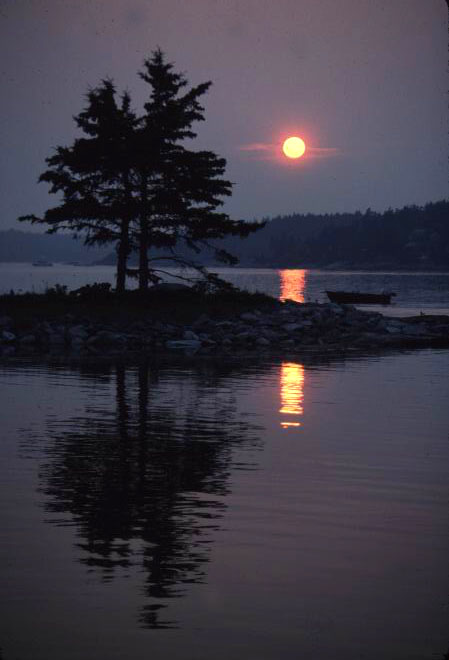
In the second image, we can see that in order to include the tree with
reflection and the
sun with its reflection it was necessary to rotate the lens to neatly
fit the scene within the frame.
Even when creating tiny images in the “macro” world, good
composition is
Very important. While walking along the perimeter of my favorite woodland
pond
One day, I spotted a dragonfly perched on some colorful Pickerel weed.
I was using
My close focus 400mm lens and a extension tube. My SB 25 flash was mounted
on the hot shoe
with a diffuser over the head. This rig is mounted on my Bogen tripod
With a large ballhead. This may sound like too cumbersome a rig, but it
works for me
on lots of small critters that are difficult to approach.
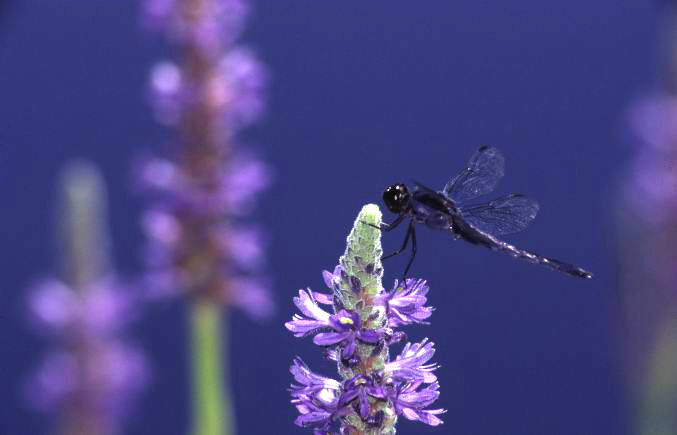
My first problem was to work my way close enough for a photo op. I waited
Until the dragonfly took off for a feed and quickly positioned myself.
When he returned to his
perch I was still as a tree. Now it was time to compose the scene.
There was nice clusters of the flowers and it was a matter of placing
the dragonfly
against the clean blue background allowing the flowers to support the
composition.
I made several quick photos, realizing he was about ready for flight.
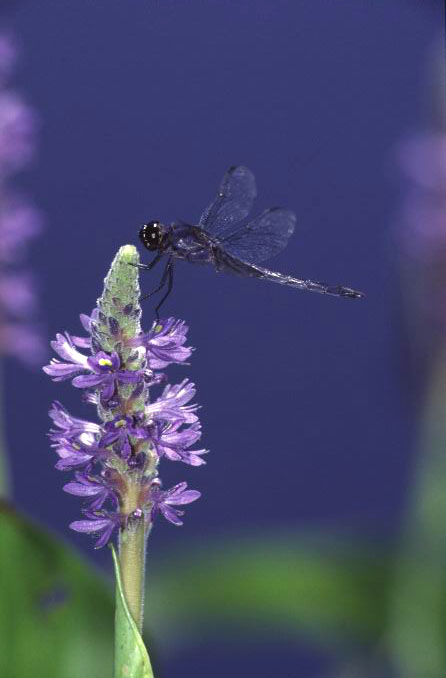
The dragonfly took off and I moved a bit closer and placed his perch in
a nice area
of the composed scene. A few seconds later he returned and I was ready.
Now the
scene was composed in the vertical format and the dragonfly was still
in front of a
clean, blue background and the green leaves lend support at the bottom
with some
out of focus purple flowers on either side of the final image. Two different
images
without moving very much.
While touring Mount Rainier, the Fireweed was in full bloom and the morning
fog swept across the lake. I enjoy fog, as it lends wonderful mood to
scenic photography. There was a beautiful cluster of the Fireweed along
the trail.
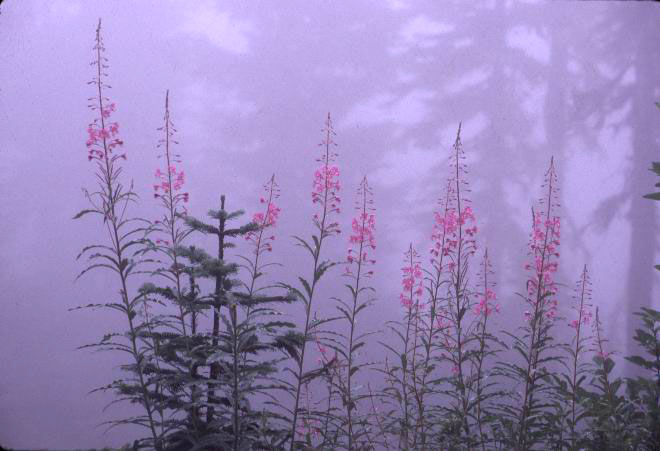
My first inclination once again was to compose the scene horizontally
with the
background of distant trees muted by the enchanting fog. After several
exposures
done this way, I rotated my 100 – 300mm lens vertically and made
several more images.
What made the second image work, was that I reduced the focal length
by “zooming out” a bit to include the entire clump of flowers
and the background.
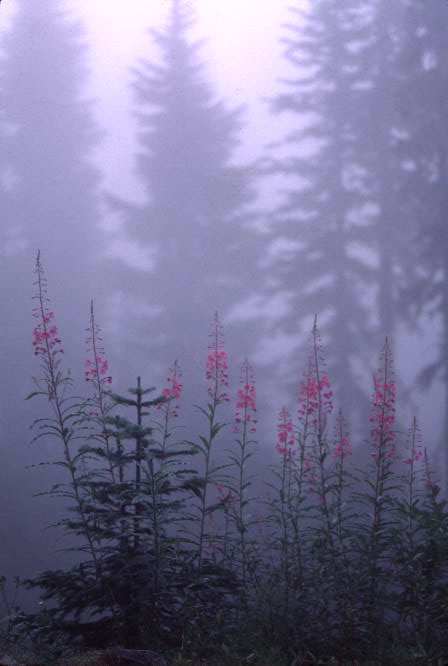
There are times when the primary scene that the photographer envisions
has
Component elements that can be photographed separately becoming other
distinct
Images.
I spend quite a bit of time in Harriman State Park, near my home and autumn
is
very special there. This scene of the lake in the early morning light
Begs to be photographed. Especially with a wide angle lens. With all the
elements
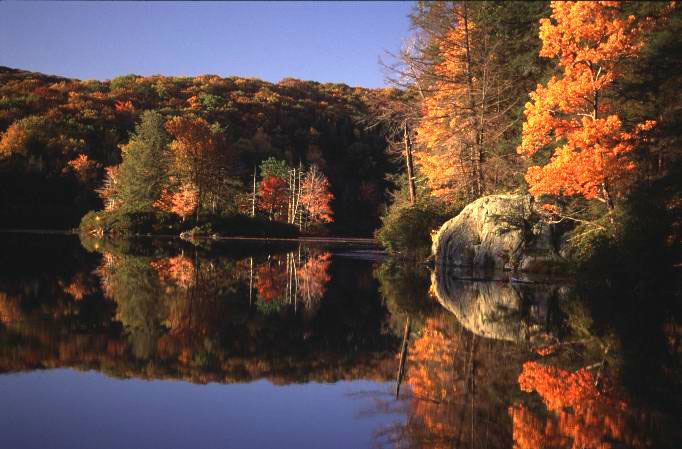
Spread out across our field of view, it is natural to simply shoot in
a horizontal
Format. But, upon further review, we can see that there are other sections
of this
Overall “big picture” that we can make into smaller, but equally
nice images.
On the far right is a dramatic looking tree complete with a perfect reflection.
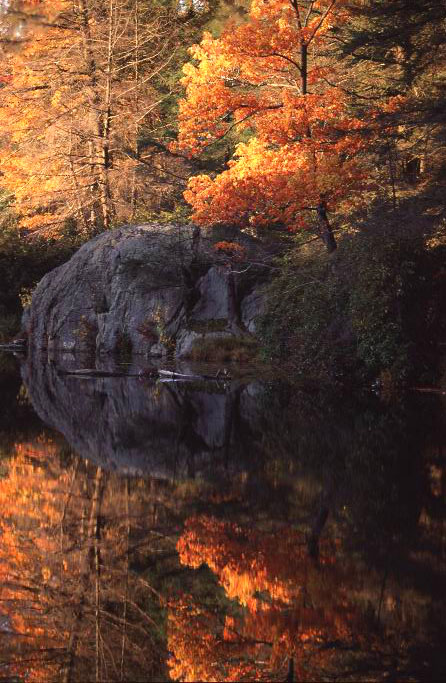
The huge boulder has nice texture and will add to the final image. There
are several smaller
trees in the scene creating vertical lines, which tend to persuade a
Vertical positioning of the lens and by doing this, the reflection is
nicely included.
Before leaving the area, I spot a cluster of trees on a small island out
at the
Far end of the lake. It is a simple matter to “zoom out” to
around 300mm and this
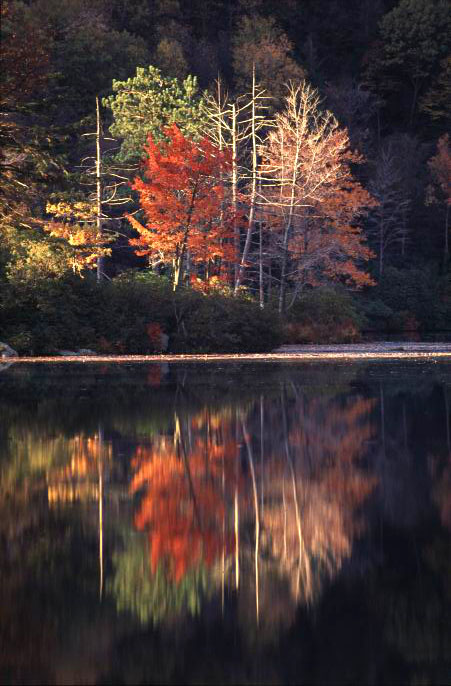
Smaller scene required a vertical format approach too. So, in a matter
of minutes,
Without moving very much three images were gleaned from one large composition.
The next time you’re out with your camera, try to
imagine several images from your
primary discovery. Then begin to rotate the lens, zoom in and out and
There just may be several scenes just waiting to be created both ways.
I wish you good luck in your image making.
Jim